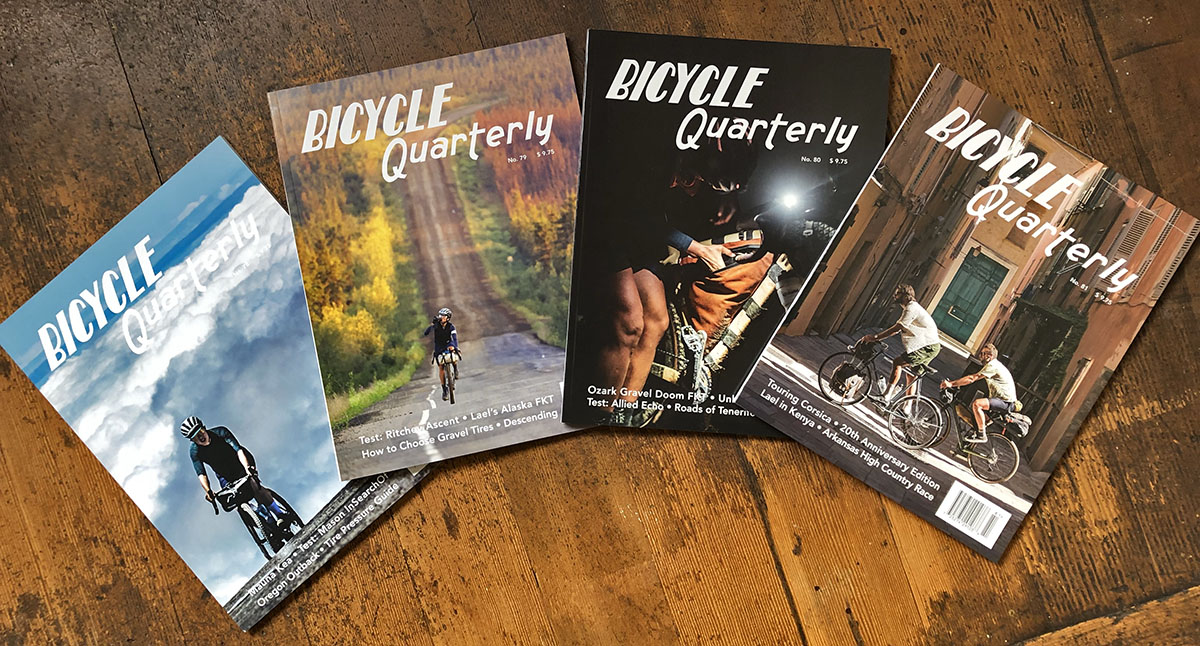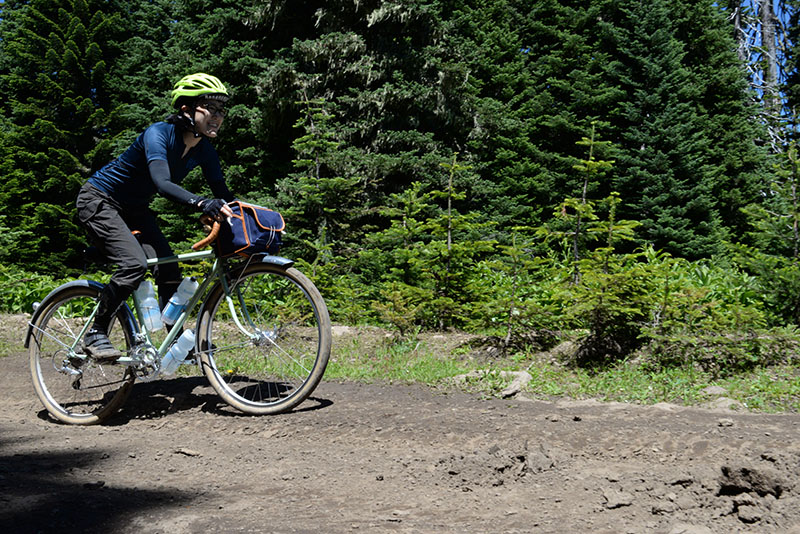Let’s Heal the Divisions in Cycling!
When Bicycle Quarterly got started 20 years ago, cycling culture, especially in North America, was focused almost entirely on racing—and on male racers. Manufacturers pushed bikes for competition, whether road or mountain bikes. If they offered bikes intended for exploring and adventure at all, it was usually a single “touring” model, relegated to the back pages of the catalogs. Mainstream bike magazines carried headlines like “Climb like a Pro” on their covers month after month. And sizing bikes for women was an afterthought at best.
That was the status quo, but there was already a groundswell building that challenged this way of thinking. At the time, they felt like radical ideas: Cycling should not be about speed, but about fun. Racing technology—especially gearing—was not always useful for real-world riding. And there were other heroes in cycling beyond male pro racers.
At Bicycle Quarterly, we developed a fascination with mid-century cyclotouring in France, because it addressed all these concerns. These riders didn’t look up racers, because they had their own culture. Women were accepted as equals from the beginning: Starting with the first Randonneur Paris-Brest-Paris, women rode in the same event, covered the same distance, and got the same medals. We found a culture that developed purpose-built bikes for riding off the beaten path: Cyclotouring bikes that were lighter, had better brakes and gears, and were more reliable than contemporary racing bikes. We discovered a culture that was proud of riding for the fun of it all.
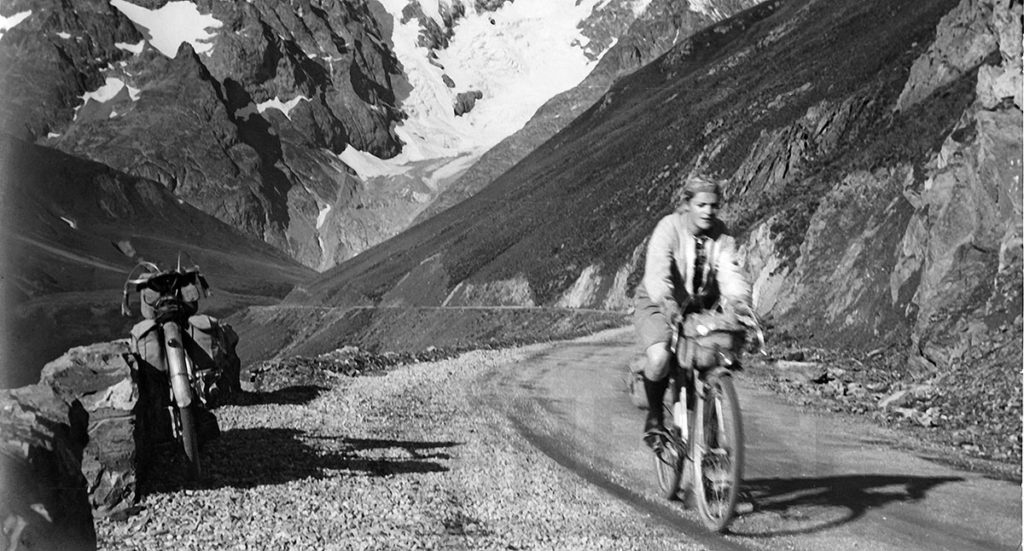
For years, the top image of our website showed Paulette Porthault climbing the Galibier in the mid-1930s. Coincidentally, many roads in the French Alps were still gravel back then… which inspired us to explore the gravel roads in our backyard, the Cascade Mountains. Madame Porthault exemplified the ethos of cyclotouring: She was incredibly fast, setting many records and Fastest Known Times (FKTs) in brevets and amateur competitions, but she also toured all across Europe at a time when foreign travel was definitely an adventure. Jan met her when she was in her 90s, yet she still radiated the fun of all those cycling exploits half a century earlier. Whether she talked about hard-fought competition or casual tours, there was a sparkle in her eyes, and her refrain usually was:“We laughed a lot!” You can see why she inspired us!
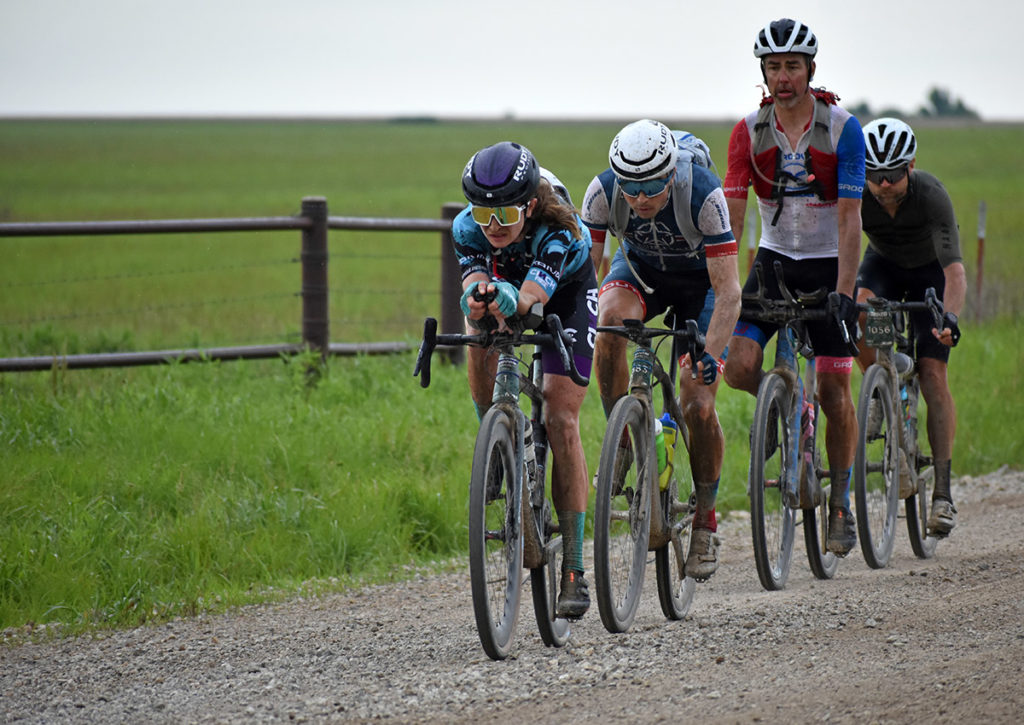
Fast forward 20 years, and the cycling world has changed almost completely. These days, bike shops focus on gravel, all-road and adventure bikes. If you want a pro-level road bike, you’ll have to look in the back room. Today’s bicycles are geared so that riders who don’t have the legs of a pro can climb hills and enjoy it. Bikepacking bags are everywhere.
Women are much more part of cycling culture now than they were when Bicycle Quarterly started. Back then, it seemed almost revolutionary to put Paulette Porthault on our banner, but these days nobody is astonished to see Lauren de Crescenzo lead a group of men across the Flint Hills of Kansas (above). Gravel racing has developed an ethos similar to the mid-century cyclotouring competitions: Amateurs of all abilities line up together with the fastest riders of our time, and women race with men as equals—and not in separate races over shorter distances and with less media coverage. And for those who don’t care to race, bikepacking adventures carry as much prestige as racing. Where in the past, there was a clear hierarchy in cycling, with male racers at the top, today there are many ways to enjoy cycling that carry equal recognition.
During the transition to this new order of things, it was useful to criticize racing’s outsized influence on cycling culture. At a time when many cyclists felt the need to apologize—“I don’t race; I just ride for fun”—words like ‘unracer’ made sense to break racing’s stranglehold. Today, as racing has faded into the background, those sentiments seem a bit outdated. The reality is that racing and touring, adventures and casual rides, are all wonderful ways to enjoy cycling, and all contribute positively to cycling culture.
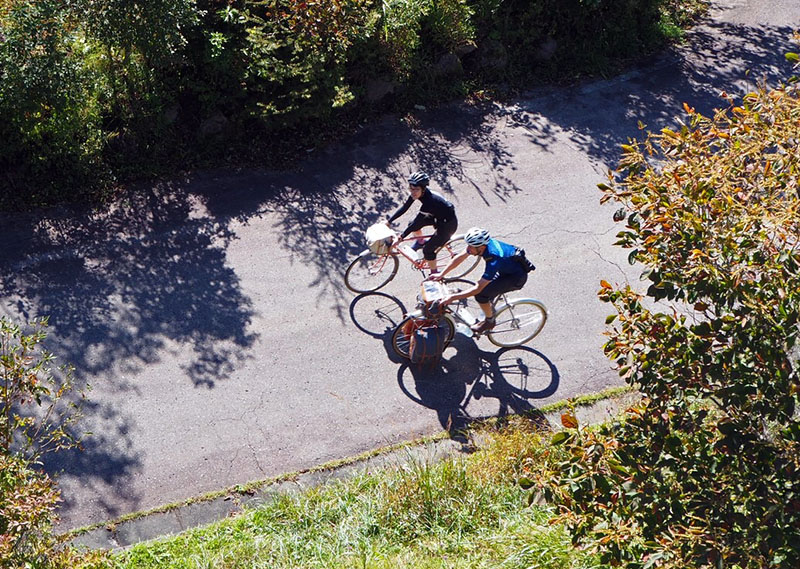
That’s how we see things at Rene Herse Cycles. We—Natsuko and Jan—run this company together. Jan loves racing and adventures. Natsuko has no interest in going fast—except on downhills. She loves touring and discovery. All our employees—women and men—ride bikes. Their interests cover a wide range of cycling. We feel that diversity is our strength.
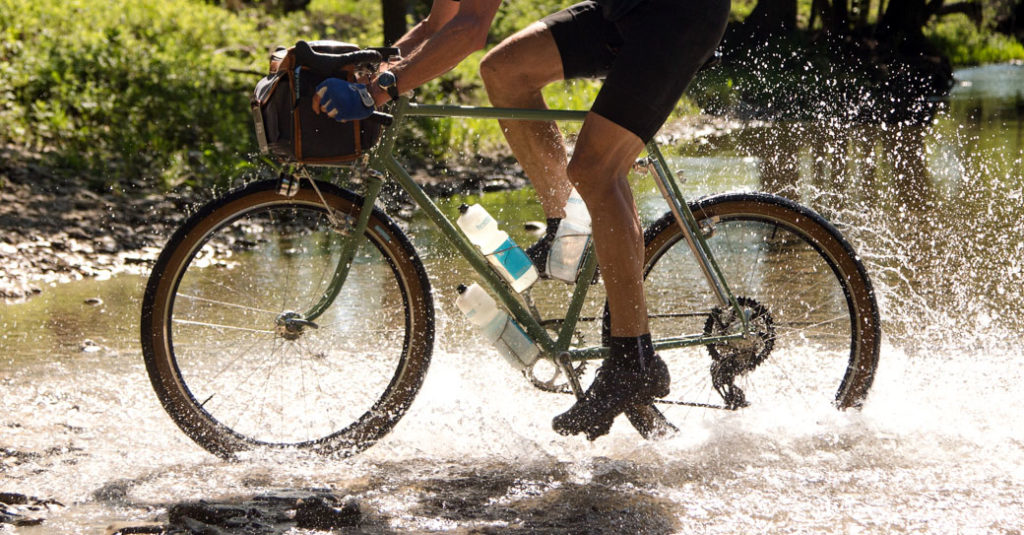
Racing and competition are essential for improving the performance of our components. With performance, we don’t just mean speed, but also durability and the simple fun of riding. Lauren de Crescenzo and Ted King racing Unbound, Lael Wilcox and Sofiane Sehili heading into the wilds of Kyrgyzstan for the Silk Road Mountain Race, Abdullah Zeinab winning the incredible Rhino Run across the deserts of South Africa and Namibia—these riders stress our tires and components to the utmost. The feedback from their exploits helps us improve our products. Jan riding the Oregon Outback, Unbound XL and the Arkansas High Country Race serves a similar purpose: Testing and improving the bikes we love and the components we sell. But we also celebrate these riders and their adventures because, as BQ Team rider Mark (above) put it: “Riding fast is fun!”
Natsuko has been adamant that performance is important for riders who don’t race, too. Riding a bike that feels like a tailwind is fun, whether you are racing the 200-mile Unbound or exploring a local mountain pass at your own pace, stopping whenever you see a nice view. Natsuko’s influence has been felt in things like our 37 cm-wide handlebars—allowing even small riders to get a perfect fit on their bikes—and sub-compact chainrings for those of us who don’t sprint for city limit signs.
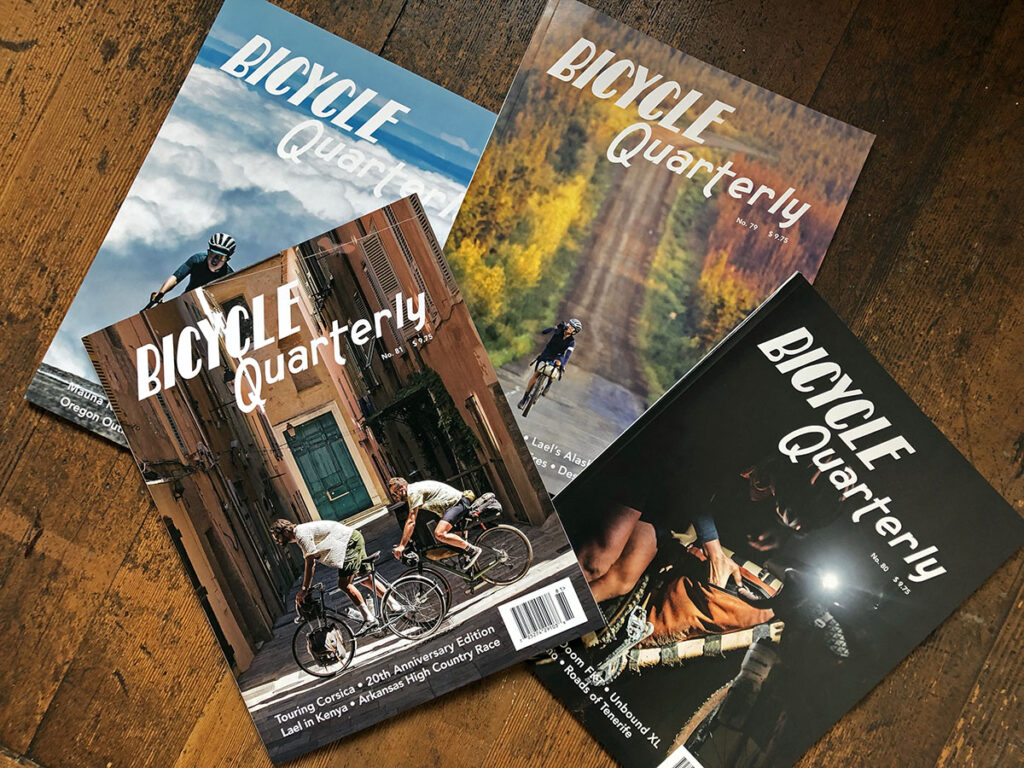
These days, Paulette Porthault is no longer prominent on our website, because we don’t have to look to the past for inspiration any longer. Natsuko just realized that three of the last four Bicycle Quarterly covers feature women cyclists. There’s an equal split between racers and casual cyclists. It wasn’t planned that way, it just happened that the most evocative photos and stories in three out of four editions were by women. It’s nice that these things happen naturally now.
Let’s celebrate the things that unite us, whether we are racers, cyclotourists or commuters—or a combination of all these, as we see more and more in the cycling world. We all share a love of cycling for the fun of it.
Enjoy your ride!
Natsuko & Jan
Photo credits: Charles Porthault (Photo 2); Unbound (Photo 3); Mr. Y (Photo 4); Linda Guerrette (Photo 5)
Further Reading:
- The Past Year of Bicycle Quarterly set consists of the four magazines that precede the current edition: more than 450 pages of inspiring articles, photos, tech, history and how-to articles.
- BQ 9 told the story of Paulette Porthault. Sadly it’s long out of print.


